Croton breeding methods
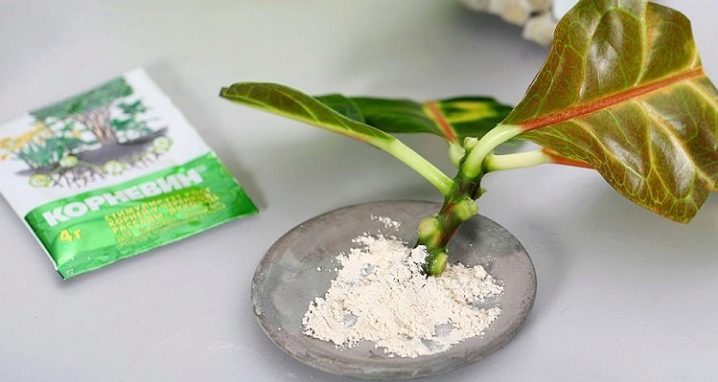
Nowadays, florist shops delight amateur flower growers with an abundance of indoor plants. There are palms, cacti, exotic plants with bright flowers and a spicy aroma, and even amazing and dangerous insectivorous plants. Among the extensive selection of indoor plants, croton occupies not the last place. The article will discuss how you can propagate this interesting flower at home.
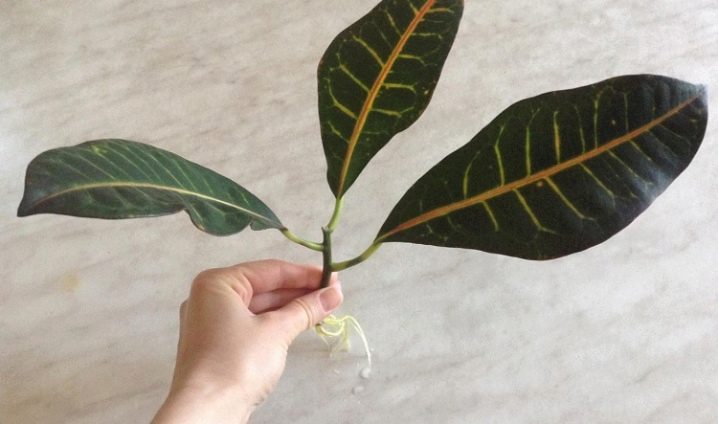
Description
Croton is a perennial, similar in color to a riot of colors in an autumn forest. Such a comparison is no coincidence - on the leaves of croton, you can contemplate both green and yellow and red. Croton blooms rarely, flowers are small, pale yellow, collected in a brush, with a light honey aroma.
Croton belongs to the euphorbia family... In nature, it grows in the southeast of Asia, can "grow" up to 3 meters in height. In "captivity" Croton grows to a maximum of one and a half meters.
It should be said that croton is a capricious plant, and it is not so easy to care for it. However, it is beautiful and able to decorate any interior.


How to propagate?
There are 4 ways to breed croton. We will list them, and then we will consider each in more detail:
- cuttings;
- seeds;
- leaves;
- layering.
Let's take a look at each method step by step.
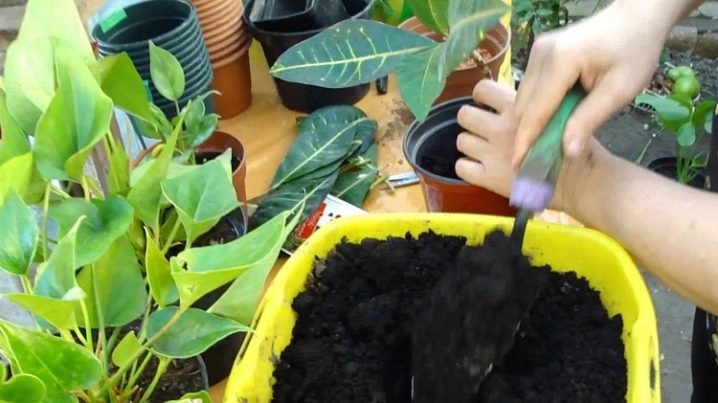
Cuttings
Probably the most popular way. To implement it, it is necessary to choose ripe cuttings from 8 to 15 centimeters long, cutting them off the "head" or side trunk of the Croton. The procedure is best in the springtime, when daylight hours will increase, and the sprouts will be able to receive enough light for full growth and development.
Although, if it is possible to use phytolamps, you can breed croton all year round.

Let's look at the step-by-step procedure for cuttings propagation.
- Prepare the shoot, cut off all the lower leaves from it, wash off the milky juice released at the cut point, thoroughly blot the "wound" with a paper napkin and sprinkle it with crushed activated carbon. Let the cuttings dry a little, at least 2-3 hours.
- Tie all the leaves remaining on the shoot into a tube, and if there are large leaves on top, cut them in half, so that the "baby" of Croton can retain moisture inside.
- Prepare the container in which you will grow the "baby". Pour a drainage layer there (for example, expanded clay), then fill it with a sand-peat mixture. Plant a stalk there, cover the top with cellophane with small holes made (for "breathing") and put it in a warm place where diffused light falls.
- After a month, you will see that the cutting has begun to grow. This breeding method is suitable for all croton varieties. The “parent” flower, as a rule, soon gives rise to new shoots after propagation by cuttings.


There is another method of growing cuttings - using water. Let's consider it.
- We take settled water with a temperature not lower than room temperature (optimally 26 degrees above zero) and place the "baby" in it.
- After the appearance of white roots and their reaching a length of 3 centimeters, we transplant the sprout into a container with the mixture mentioned above. Cover with cellophane.
- Be sure to monitor the ambient temperature. It should not fall below +23 degrees and rise above +28. But the lighting is also adjustable - it should be diffused light, soft, without direct burning rays. Provide croton with long daylight hours - at least 12 hours. If necessary, "extend" it with a phytolamp.
- After 30-35 days, the sprout will take root. Transplant it into a small pot with a drainage layer and nutritious potting soil. After the croton grows and its roots fill the container, transplant the plant into a pot that is larger in diameter - about 15 centimeters.
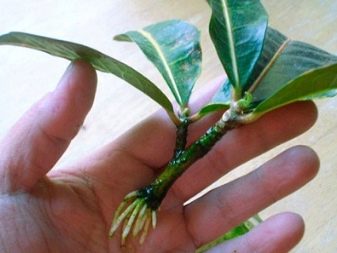
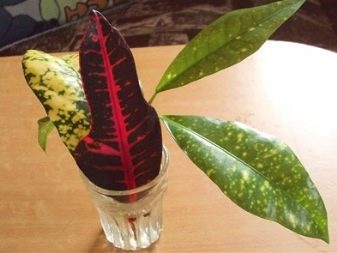
Seeds
Another way to reproduce croton is using seed. Only freshly harvested seeds are used for planting, as they very quickly lose their viability. Seed propagation is carried out in winter (late January - early February).
Let's consider this process in stages.
- First of all, we put the seeds in an aqueous solution of phytohormones, for about 2-3 hours. Some amateur flower growers simply soak the seed in very warm water (60 degrees Celsius), keep them there for 30 minutes, and then leave them to swell for 24 hours.
- We sow seeds in a prepared seedling box or any other similar container. Sowing depth - 10 millimeters.
- We put the box in a warm place (the optimal temperature is 21-23 degrees above zero) and cover it with cellophane or glass. We make sure that the top layer of the soil is always moist.
- After 30 days, the seed sprouts. When each of them gives 3 leaves, they need to be planted in different pots of small diameter - 5-7 cm.
- They take care of little crotonchiks in the same way as for adults: they water, spray, ventilate the room in which they are located, provide diffused lighting and warmth.
Let's say right away - it's not easy to grow croton from seeds. This method is rarely used by amateur flower growers.
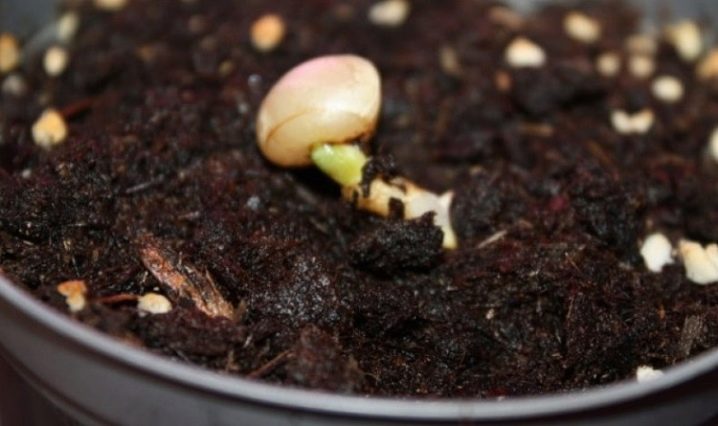
Leaves
Another breeding method is the rooting of a stem shoot with a single leaf, a "dormant" bud and a small piece of stem. This method is called leaf. And the material for it is obtained with the help of a cut from a flower-"parent" of a shoot with a single internode, where there is a large leaf and an axillary bud.
The leaf method is in many ways similar to the cuttings. The resulting shoot is planted in soil mixture or immersed in water for rooting, maintain the optimum air temperature, and provide long-term diffused lighting. But one point is worth noting: if you try to root only one leaf, and it can give roots, a full-fledged croton will not grow from it, since a bud is needed for the development of the shoot.
Therefore, prepare the material for planting, taking into account the recommendations of specialists.
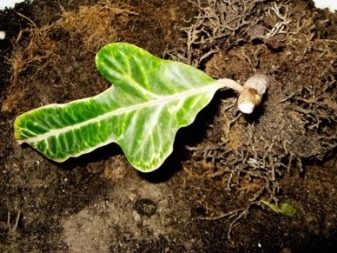
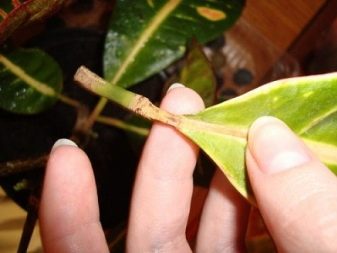
Layers
This is the last way you can breed croton. There are 2 ways: propagation by air layers and soil.
Let's look at the "air" method first.
- Choose an adult plant that has dropped some of the leaves in the center and bottom. We retreat 15-20 centimeters from the lowest leaf or soil, if at the bottom of the leaves, in general, not. Cut off the bark in a circle with a very sharp knife (scalpel, razor). The cut should be no more than 10 mm wide.
- We blot the bare area with a paper napkin, remove the juice that has come out.
- We treat it with the drug "Kornevin".
- We take a piece of wet peat or moss, wrap it around the cut site.
- Now we take a dark piece of cellophane (a garbage bag is suitable), put it on the plant through the top, and use it to close the "wound" lined with peat. From the bottom, we carefully fix the bag with a cord or soft thread in order to avoid slipping, from above - we tighten the thread a little, leaving a crack for oxygen supply and for moisturizing.
- We are waiting for a month and a half. During this time, roots are formed at the cut site.
- When they reach a size of 5 centimeters, cut off the stalk, and plant the resulting plant in a prepared container filled with a suitable soil mixture and drainage.
- For two weeks Croton should "gain strength" - for this it is worth covering it with a film in order to maintain high humidity. It should be watered in the "bottom" way (pour water into the pan).

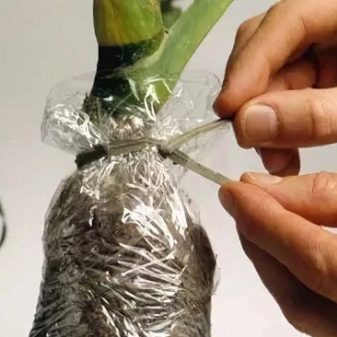
The "soil" method is also possible.
- Produced if there are exposed lateral stalks (shedding leaves).
- We prepare a wide container and bend the selected side shoot to it - directly to the soil.
- Cut the bark from the bottom of the stalk, blot the "wound" with a paper napkin, and then sprinkle it with "Kornevin".
- Then we attach the stalk with an incision to the soil by fixing it with a "spear" in the form of the letter V. For these purposes, even a hairpin is suitable.
- Sprinkle the cut with soil mixture.
- We cover the container with cellophane to maintain a constant humidity level.
- When you notice that new leaves have formed on the "bent" trunk, separate it from the "parent" plant and transplant it into another pot.
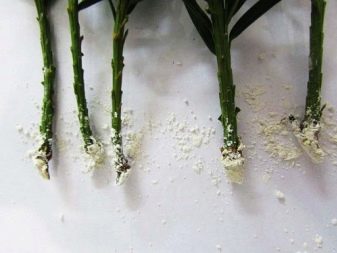

Care features
It is not enough to plant a plant - you need to know how to properly care for it, so that it grows and pleases your eyes. Let's analyze some of the nuances of croton care.
- Croton juice is poisonous. Therefore, when working with it, be sure to protect your hands with rubber gloves, and wear a medical mask on your face. If the juice gets on the mucous membranes, immediately rinse them with water and consult a doctor.
- The culture loves humid air, when dry it withers. This means that you need to spray it from time to time from a spray bottle and wipe the dust from the leaves with a damp cotton rag. In the summer - once a month - give the flower a warm shower, while covering the soil.
- Never put Croton in places where there are drafts and do not pour cold water on it.
- Croton is one of those plants whose leaves can take on strange shapes. Therefore, the grown plant may differ from the "parent" - do not let that scare you.
- The plant rarely blooms, and its flowers do not differ in special beauty. However, this process weakens the plant. Therefore, if you do not want to propagate it by seeds, then remove the inflorescences as soon as they appear.

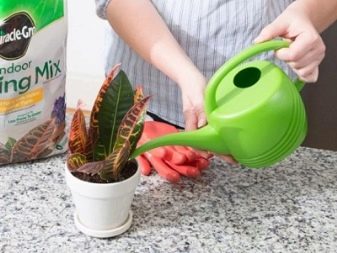
Growing recommendations
Finally, a few more tips from croton cultivation specialists.
- To avoid stagnant moisture in the pot, use drainage. It should be under the soil. Carry out new watering only after the topsoil has dried out.
- Croton loves slightly acidic soil. You can buy it in a specialty store or make it yourself by mixing rotten manure, leafy soil, turf, peat and sand in a 1: 1: 1: 1: 1 ratio.
- Fertilize croton during spring and summer. Do this once a week. In the autumn-winter season, the flower can be “fed” once every 3-4 weeks.

You can learn more about how to root and propagate croton with a leaf.


























The comment was sent successfully.